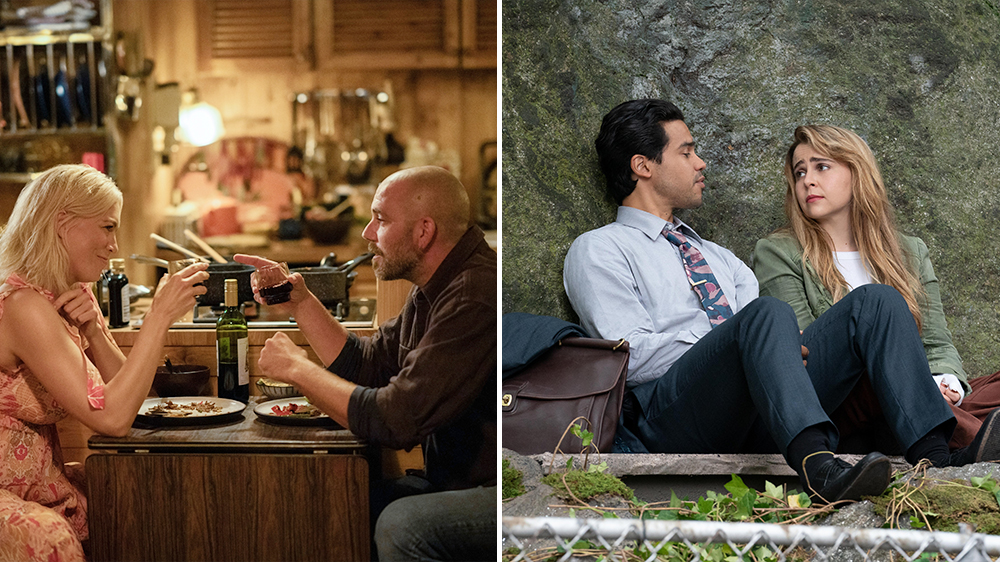
Whether it’s a collision in an office elevator or a case of mistaken identities, fans of romantic comedies have a love-hate relationship with meet-cutes: The central couple must meet somehow and, since this is a love story, preferably they should do so in a cute way. But how many more white shirts must be killed in the name of clumsy-cute trip-and-falls while holding cups of coffee or orange juice?
For serialized romances, the challenge is even greater. Directors and writers must create interesting run-ins for characters to help sustain interest for longer than it takes for audiences to eat a bucket of popcorn.
“I feel like the bar now is, if you are expected to figure out a meet-cute, it has to be your new slightly subversive never-before-seen version of it,” says director Jay Karas. “I don’t think it’s a trope that we can totally get away from, because people have to meet somehow, and it’s just about how do you modernize it.”
Karas has a personal connection to the genre — he met his wife, author Monica Osborne, in a bar. He also got to do a send-up of both it and teen movie tropes with “Woodstone’s Hottest Couple,” an episode of the CBS comedy “Ghosts.” There, he played matchmaker for the ghost of an ax-murdered ‘80s teen (Odessa A’zion) stuck forever in her prom dress and the spirit of a young man (Tyler Alvarez) who died during an 1832 cholera outbreak. They meet as a sea of other cholera victims slowly part, but she doesn’t truly understand how handsome he is until he takes off his glasses. Later, per the script notes from writer Kira Kalush, they bond while the Thompson Twins’ “If You Were Here” plays.
Meet-cutes can also serve to contrast what audiences already expect from a character. “Sunflowers,” the Amsterdam-set episode of Apple TV+’s “Ted Lasso,” sent Hannah Waddingham’s poised and calculated Rebecca hurling over a bridge and into a canal. She’s drenched when she connects with Matteo van der Grijn’s handsome houseboat dweller.
“You’re leading the audience along a certain path that they feel comfortable with,” director Matt Lipsey says before adding that they could have made the fall shorter (and thus, less shocking and, well, wet) but “playing with expectation just make it a little bit more dramatic and a little more over-the-top.”
Meet-cutes nest nicely in musicals thanks to their optimism; they help sell a world where people are so in love that they will burst out in song. Broadway vet Thomas Kail, who also directed the first two episodes of Hulu’s musical comedy series “Up Here,” notes that Tony and Maria, the “West Side Story” star-crossed lovers, “didn’t know each other for that long and, all of a sudden, they’re fully in love.”
The first two episodes of “Up Here” are opposing backstories and points of view for Mae Whitman’s Lindsay and Carlos Valdes’ Miguel. But the way they meet is only really seen in the first episode and from her perspective. No one is arguing the circumstances of their awkward first encounter when she was wearing uncomfortable plastic pants and guarding a bar bathroom so that her roommate could hook up with a stranger. And no one (especially not the audience) wants to linger on it.
“There is this compression of time that can happen in a romantic comedy that also happens in the musical [where] it feels like they’re in sync,” Kail says. “It felt like it was a way to introduce the audience to some of the rules of the game we were going to be playing.”
He says the focus of the series isn’t about the first meeting because “it was about what happened after that.”
Just like in a real relationship.













